Budget rifle alert! While we never pass up an opportunity to play with the fancy stuff, your humble TTAG scribes are always on the lookout for affordable performance. With retail prices starting around $469, Winchester’s new-for-2017 XPR line certainly gets the “affordable” part right. So . . . how ’bout that performance?
Already available in a dozen calibers from .243 Winchester to .338 Win Mag and in at least 14 configurations and styles — from the base model seen here to various flavors of camouflage to a high-tech aluminum chassis — the XPR bolt-action rifle line is a veritable firearms farrago. TTAG borrowed this XPR chambered in 6.5 Creedmoor for testing.
With a set of 30mm Talley rings made for the venerable Winchester Model 70, we mounted a Leupold VX-3i LRP 4.5-14×50 riflescope with their Impact-32 MOA Reticle.
I’m not a Winchester Repeating Arms Model 70 historian. So I won’t be running down the exact differences between the Model 70 and the Winchester XPR rifle. Or examining Winchester’s assertion that they’ve kept some of the proven Model 70’s features alive in the XPR while streamlining the rifle’s design and manufacturing processes to reduce costs. But that’s the company line.
One obvious change (at least as compared to the current and original Model 70): The use of a 3-lug, push feed bolt with a plunger ejector. This is simpler to make and less expensive than a Mauser-style controlled round feed design.
The XPR’s nickel teflon-coated bolt operates smoothly. It isn’t much of a looker, but it doesn’t bind and it locks into battery like a key into a lock. It unlocks just as easily, cocking the striker upon bolt lift without manhandling. The cocking indicator on the bolt shroud offers both a tactile and visual reference of the rifle’s cocked/uncocked condition.
Every XPR rifle has a two-position safety that’s convenient to operate with the thumb of your firing hand. The XPR’s thumb safety slider is a simple affair; back for Safe and forwards for Fire. On Safe, the bolt is locked and can’t be manipulated. A bolt-release button is positioned in front of the safety. Pushing forwards on this button unlocks the bolt allowing for unloading or disassembly while the gun is on safe.
The XPR’s one-piece bolt handle doesn’t allow for bolt knob swapping, but the factory knob balances comfort, purchase, and a low-snag design. It’s just right for a hunting rifle.
A prominent lever on the receiver’s left side makes removing the XPR’s bolt a doddle. Simply push the serrated front end inward like a magazine release and slide the bolt out.
Of course, that isn’t how the XPR’s actual magazine release functions. In typical bolt-gun fashion, a flappy tab (up front) locks the magazine in place. Pull it towards you and the magazine drops free.
The Winchester XPR ships with two detachable box magazines. In 6.5 Creedmoor, the mag holds three rounds. At $20 for a spare, they’re inexpensive enough to carry a couple loaded backups on your hunt.
The polymer mags leave plenty of room for even the longest 6.5 Creedmoor loads. For both of you handloaders who work up custom loads for sub-$500 rifles, this is sure to be appreciated.
The polymer stock’s forend and grip are covered a sandpaper-like finish. The texturing looks and feels vastly superior to the molded-in checkering found on most plastic rifle stocks.
Slim and lightweight, the base model XPR’s stock isn’t specific to right- or left-handed shooters. Comb, grip area, and cast are all mirrored or centered.
Winchester’s Inflex Technology recoil pad appears to be made of some exotic leather (rhinoceros, perhaps?). It turns out it’s rubber. Regardless, the pad creates a comfortable shooting experience, providing the right amount of cushion while squishing in a fashion designed to pull the comb away from the shooter’s face.
For a few bucks more, Winchester will sell you a suppressor-ready XPR with threaded muzzle. Our base model — and most of the fourteen-plus variants — culminates in a recessed target crown on its 22-inch, sporter profile barrel. The barrel is button rifled in 1:8″ twist, then treated with Winchester’s black Perma-Cote (appears to be nitrided) for durability.
Hitting the range with some Halloween pumpkins, the XPR proved itself reliable and accurate on its first outing. I had it sighted in with three shots and didn’t get worn out, even after blowing through eight boxes of ammo.
https://www.youtube.com/watch?v=3sw-A-NKx8E
While the XPR was accurate enough to carve a face in a pumpkin at 100 yards, 6.5 Creedmoor was a mite too destructive on the orange gourd to git ‘er done. My pumpkin failed on the third shot (the nose). Trying for destruction, though, worked pretty well, with Winchester Expedition Big Game Long-Range ammo doing a heck of a number on a water-filled pumpkin.
The XPR’s factory-adjusted M.O.A. trigger certainly helped in the accuracy department. It broke cleanly at a hair under 4 pounds with no slack or real creep of which to speak. The trigger guard is wide and comfortable.
The XPR’s stock is a bit of a disappointment. Sure, it feels and looks hollow and cheap and plastic (which it is). That’s to be expected in a budget rifle designed for hunting, field, and generally rough use, though. But the stock’s comb is too skinny and lacked adequate height, even with the scope mounted as low as possible.
Winchester offers the XPR with a laminate thumbhole stock, a walnut stock, and an aluminum chassis, too. But if this base model were my rifle I’d add a cheek piece right away. And budget-priced or not, the stock could also use a tad more touch-up at the factory, with visible mold flashing more obvious than it needs to be.
Grabbing five different 6.5 Creedmoor loads — admittedly a bit Hornady-heavy — it was time to put five-shot groups on paper.
Hornady American Gunner 140 grain BTHP at 0.965 MOA.
Hornady BLACK 140 grain BTHP at 0.961 MOA.
Hornady Match 120 grain ELD at 1.378 MOA.
Hornady Match 147 grain ELD at 1.052 MOA.
Turning in the tightest group: Winchester Expedition Big Game Long Range 142 grain Nosler AccuBond Long Range at 0.844 MOA.
I reckon the XPR’s sporter barrel is slightly affected by heat. I kept shooting tight three-round groups but didn’t have the patience to let the barrel cool when shooting more. A 10-round group, fired fairly quickly, opened up to 1.4 MOA, which is likely a combination of me failing to keep it together for that many shots in a row and a hot barrel.
Overall this is a fairly minor walk for a skinny-barrel hunting rifle, though, and a lot of that is thanks to the XPR’s free-float design and steel recoil lug bedded into the stock. Additionally, Winchester stress relieves each XPR barrel after manufacture, which is a nice touch that reduces heat-induced movement.
In most rifles we expect to see MOA-or-better accuracy by the time we hit $1,000 MSRP. In the case of the Winchester XPR, we’re easily beating one-minute accuracy at half that price.
The XPR has a nice action, great trigger, detachable box magazine, and quality metal finish. For shooters seeking an affordable, accurate hunting or general-use rifle, the XPR lineup absolutely demands a look.
Specifications: Winchester XPR in 6.5 Creedmoor
Caliber: 6.5 Creedmoor (also available in 11 other calibers)
Barrel Length: 22″
Barrel Twist: 1:8″
Overall Length: 42″
Length of Pull: 13.75″
Weight: 6 lbs 12 oz
Magazine Capacity: 3 rounds
Stock Material: composite with steel recoil lug
Receiver Material: chromoly steel barstock
Barrel / Receiver Finish: matte black Perma-Cote
Bolt Finish: nickel teflon
Trigger: Winchester M.O.A. Trigger System (single action, approx 4 lbs, adjustable for overtravel and pull weight)
Scope Mount: receiver drilled and tapped for four, 8-40 bolts
MSRP: $549.99 (check recent price on Brownells)
Ratings (out of five stars):
Style and appearance * * *
The base model XPR is a no-frills, basic hunting rifle.
Ergonomics * * *
I appreciate the relatively flat bottom of the fore-end and like the grip texture, but the stock’s comb doesn’t do it for me. The recoil pad is great, though, and the bolt, safety, and trigger’s ergos are excellent.
Customization * *
Other than swapping the stock for a different one, there isn’t much you can do to the XPR aside from minor trigger adjustment and slapping on a bipod or sling.
Accuracy * * * * *
With sub-MOA accuracy and a street price in the mid-$400 range, the XPR is way ahead of the curve here. Winchester’s chassis rifle variant should be giving the Ruger Precision Rifle a run for its money.
Reliability * * * * *
Zero issues. Ran smoothly and properly as a bolt gun should.
Overall * * * *
Winchester’s XPR is a bang-for-the-buck bullseye.

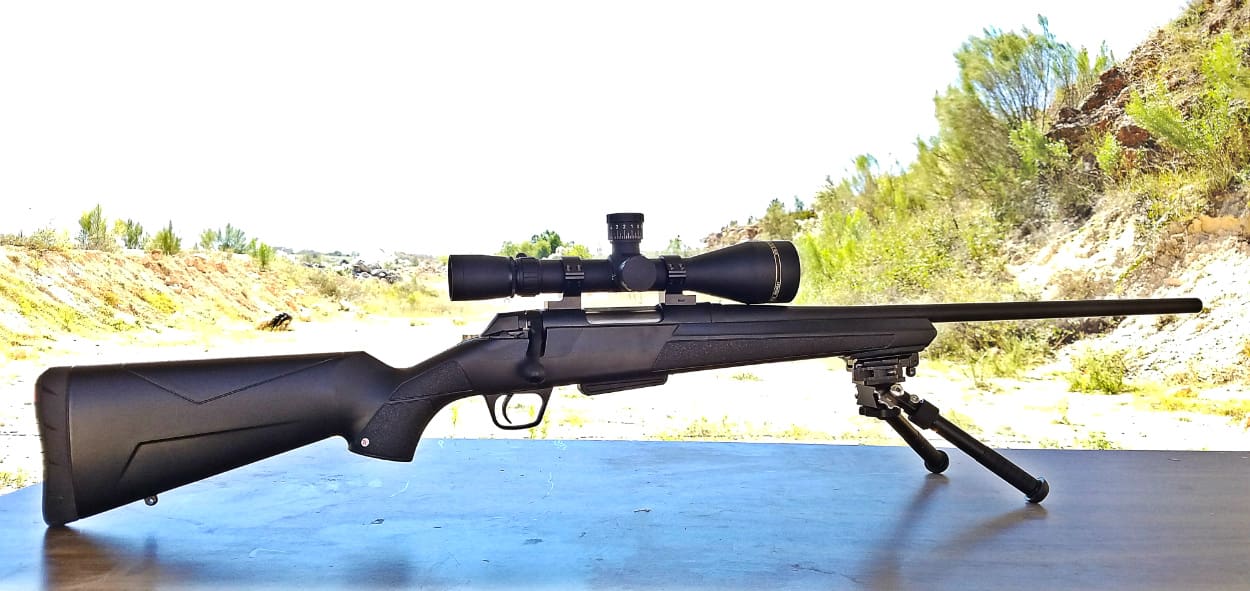
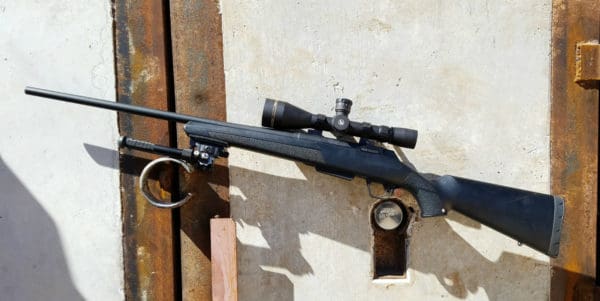
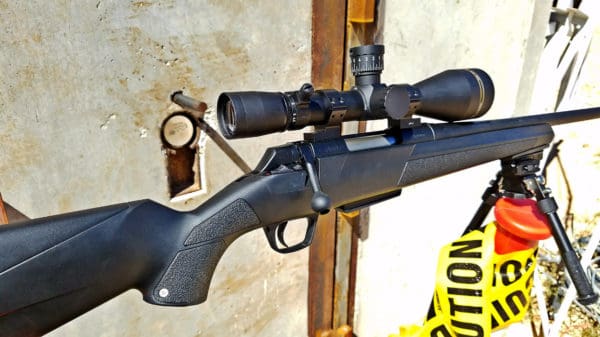

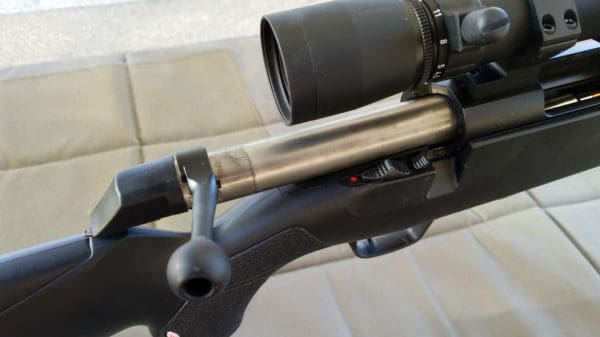

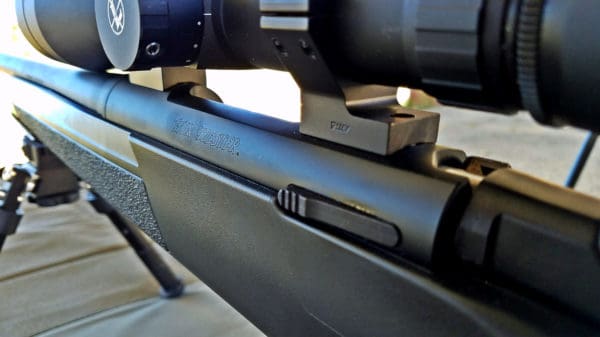
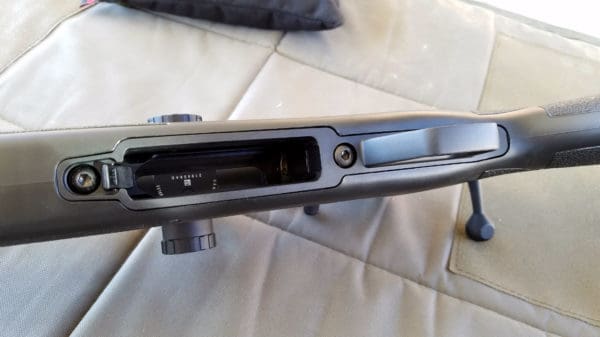
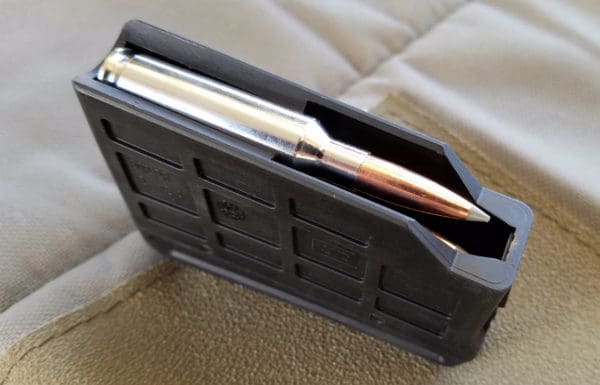
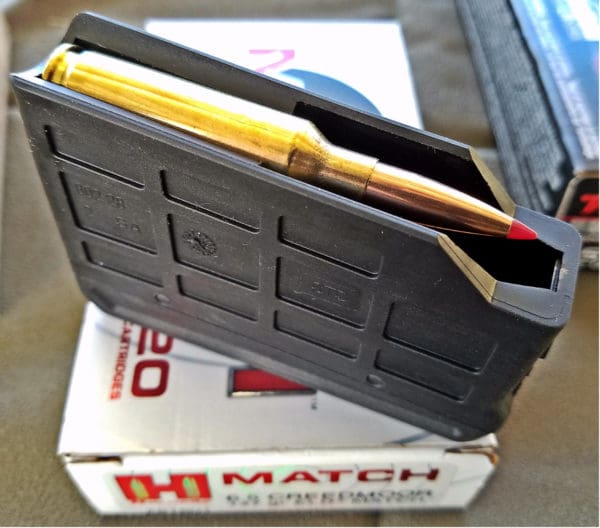

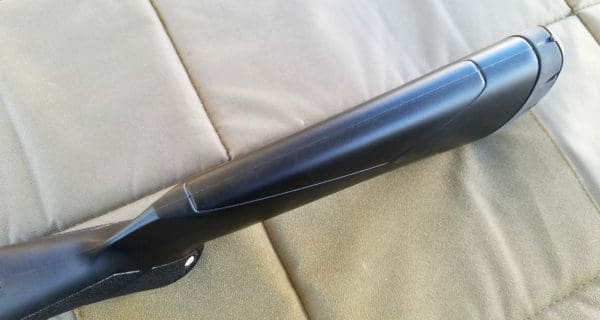

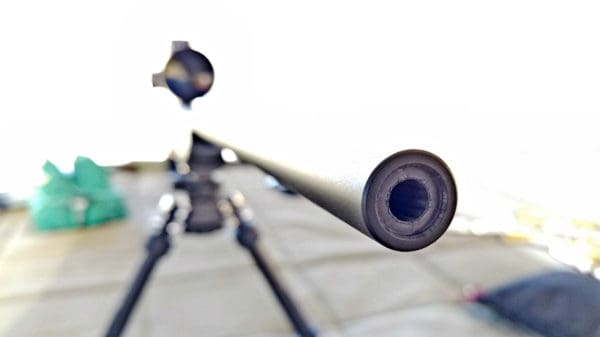
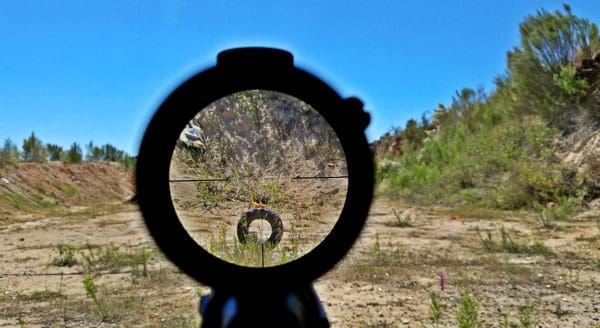
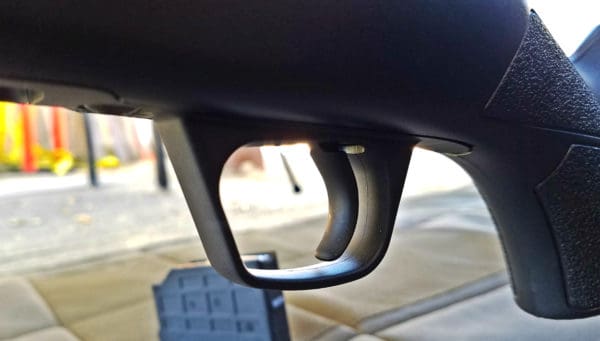
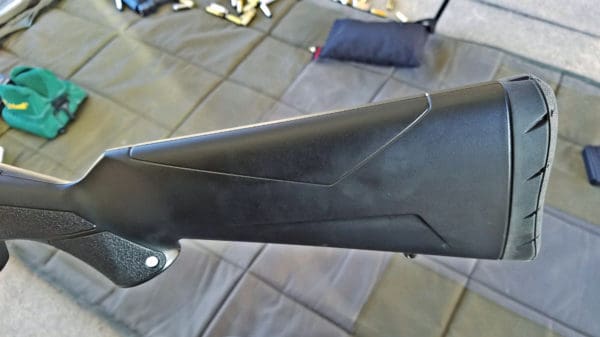
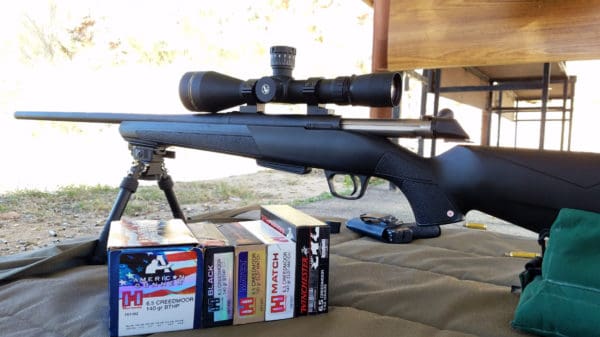
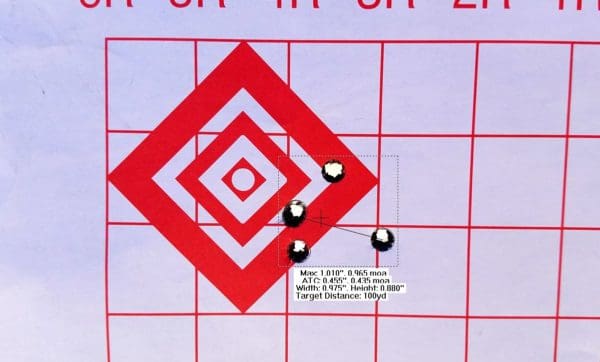
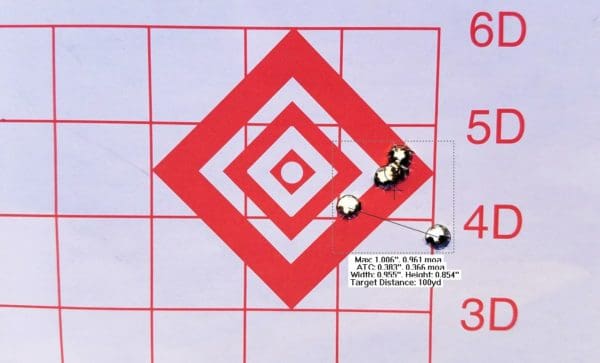
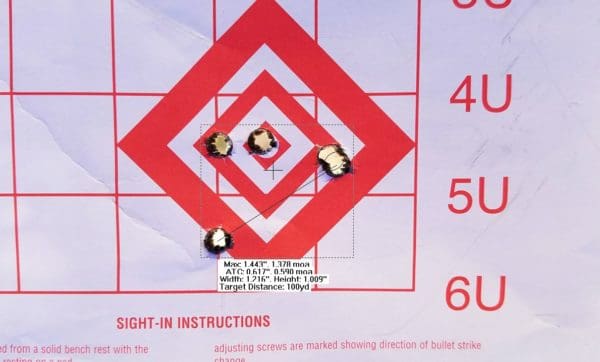
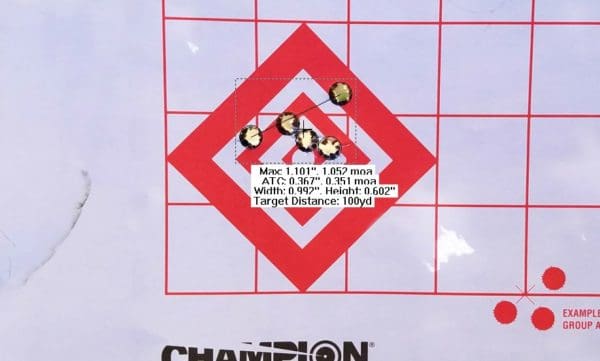
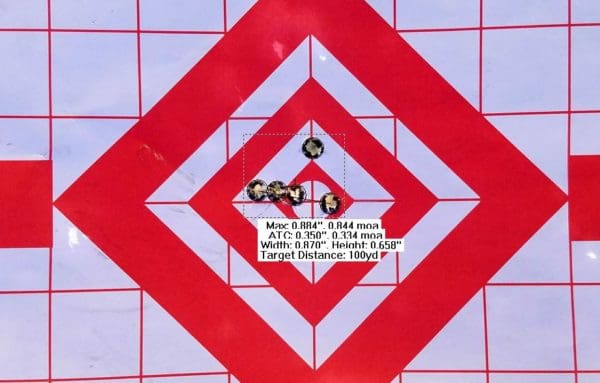
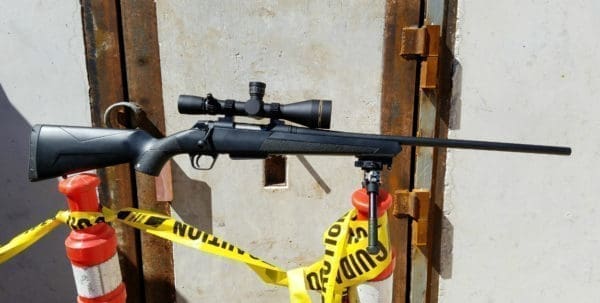
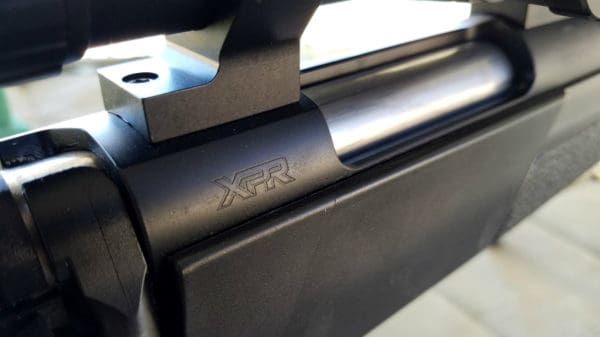



Really, a detachable magazine that holds all of 3 rounds? Because 4 or more would be just too many?
Yeah, they do pick odd numbers, my Browning X-Bolt is a 4rnd mag…
State hunting regulations on mag capacity maybe?
1.Cost and materials,,. 2.Asthetics, with the slim stock 4 rounds mag sticking past mag well,. ??
“The XPR’s stock is a bit of a disappointment. Sure, it feels and looks hollow and cheap and plastic (which it is).”
That is always my biggest “complaint”(observation) when it comes to rifles in this price range…the other item I don’t care for in most “budget” rifles, are the way the safety is, I prefer a 3 position safety, and have gotten use to them…While I’m sure aftermarket stocks are available for this XPR line, changing out the stock would move the rifle into a different $$$ category, and sadly, Hogue doesn’t make an overmolded for it…
While $469 is a great price, I think better all around rifles can be had for a few $ more, and the one that immediately comes to mind would be a Howa, and sans optics, you can pick up a Howa for just a cpl bucks more, with a better stock, and 3 position safety…
While sold out, and no price listed, I’ve found them for $500 or a shade under…
https://www.sportsmansguide.com/product/index/lsi-howa-1500-hogue-bolt-action-65mm-creedmoor-22-barrel-51-rounds-51?a=1947810
MSRP of the XPR with a walnut stock is only $50 more, so at retail it’s likely a $499-ish rifle.
Yeah, I’m not one for wood stocks, they may be pretty to look at, but scratch them, ding them, etc, and the rifle value tanks…I have one rifle with a laminated wood stock, and it’s a beauty, but I hate to take it out into the woods, because sh!t happens…Sadly, Hogue doesn’t make an overmolded stock for it either, but if they did, I’d have one on there it a beat…
I think the issue with Hogue has to do with the way the XPR is made- specifically the recoil lug. I checked the Hogue website, and the Ruger American is similarly affected. In both cases, the lug is different from what we’d normally see on the bottom of a receiver (or sandwiched between the receiver and barrel in the case of rifles like the Remington 700). Instead, it is integrated into the stock, which makes it trickier to build an aftermarket version (and keep the price down while doing so).
you’d have to see the quality of wood though. When i was getting back into hunting I went for a Savage 10/110 (still don’t know the difference). And while i got wood, it’s not the wood that my grandpas rifles and shotguns have. It’s like the newage processed crap they throw on a mossberg 500. Upside is if I get a scratch I don’t care as much either. Downside is i’ll be ponying up for a good wood stock later.
“…and the rifle value tanks…” It is a $50 upgrade to the wood stock on a sub $500 gun. Destroy the wood stock and the value drops 10%. This is NOT a model 70 and isn’t pretending to be. It’s like worring about the value of you Kia.
It’s a manufacturing issue really. They’re only giving you an actual nice wood stock like they had in the 80’s when you drop like 2k these days.
You can’t find the wood that was used on great grand daddy’s rifle because those trees are all but gone, them 200 year old growth timbers and trees , history. So once again, ” we can’t make that like that no more”
Sure you can still find nice wood. If you want nice figure on a stock, you’re looking at about $500 to $750 for a nice stick of thin-shelled English walnut (easily available here in the US) wood in a blank.
There are nice rifles made with very nice wood all the time. You’re just not going to get that sort of rifle in an under-$1K price bracket.
When I’m making a custom stock, I reckon a nice, but not extraordinary piece of wood, should cost between $300 to $500. From $400 to $600, perhaps $700, the wood should look pretty nice, with good figure in the buttstock area, and grain flowing upwards into the forend. From $700 on up, now things start to become subjective, or the wood has very unusual and eye-catching figure. There are blanks available all over the map in terms of price from $700 to $800 and up – as I say, things become subjective.
Here are some representative pictures of walnut gunstock blanks cut from US walnut trees:
http://www.gunstockblanks.com/pictures/the-blanks/
And here’s the really high-end wood, cut from Turkish walnut trees:
https://turkishwalnut.net/carbine.html
Notice as you scroll down, you can get into some nice wood for under $800.
The Turkish burl wood has always had an exceptional price. It’s also high-risk wood for a gunsmith to use in making a stock, because it can be prone to chipping out as you work it. American-sourced English walnut is readily available, as is Claro walnut.
Finished rifles with nice wood are available from various makers of bolt action rifles like Cooper, Dakota, and others. I’d say for the plainer end of wood, you’re looking at $2K on up for the cost of a finished rifle, and for something like a Dakota Model 76 with high-figure wood, you’re looking at $4500 to $5K. For a fully custom rifle, with a nice stock made of high figure English walnut, nicely checkered, built on a Mauser or Springfield action, you’re looking at prices from $6K to $8K and up.
The issue is that your currency is no longer worth crap, thanks to the Federal Reserve, and gun buyers seem to think that their dollar should buy as much gun as it has for the last 40+ years – ie, for $1K and under, you should get a pretty nice gun. With the Fed targeting a 2% inflation rate, the value of your money is cut in half every 36 years or so.
Nice!
I’m having the impact 32 reticle installed in my leupold and having them make a custom elevation turret. Great company.
Yup, custom reticles and custom turrets are one of the major reasons I keep going back to them. Their new “light management” filters are pretty impressive as well. The only other company that takes it a step beyond them is US Optics, who’s even made custom turret shapes for me.
No one here thinks a controlled-round feed boltface is a must-have?
The pushfeed is a non-issue if you’re a benchrest shooter, but to me, that’s a must for any “fieldwork” I may use a rifle for
Controlled round feeding was a must have in Europe in 1917, and for some people even today, but not because of any performance deficit in the push feed design.
In fact, push feed has been shown to be more reliable than Mauser style controlled round feeding because of the possibility of the extractor separating from the bolt body in the Mauser design.
But hey, it’s your money. Far be it for me to stop you from wasting it.
There’s little possibility of the extractor on a Mauser 98 coming loose of the bolt body. If you examine the machining on a Mauser bolt, you will see that the extractor actually is held to the bolt more tightly the more force you use to extract a case. Grab a Mauser 98 and look at the extractor groove in the bolt, and then look at how the extractor fits into that groove, then ponder what happens when you put more force onto the extractor.
Similar bolt actions with Mauser-style extractors (ie, close, but no cigar) might not have the same beveled extractor groove in the bolt, and could have issues. But the true Mauser can put a ferocious pull on a case. Most Mausers I’ve seen with “extractor issues” have no problem with the extractor – the extractor has pulled the head off the case and now the gun owner needs the headless case extracted from the chamber.
Oh, and unlike some other bolt action rifles, the bolt handle on a Mauser 98 is part of the same forging. ie, the bolt handle on a Mauser 98 isn’t silver-soldered onto the bolt, like say, oh, a Remington 700’s handle is. This means that while you’re trying to extract a case from a Mauser, you won’t tear the handle off the bolt that easily.
You are not wasting your money if you buy a controlled round feed action. What planet do you live on? I guess reading idiotic statements is to be expected in comment sections.
What a piece of junk the XPR looks like. Is that a plastic trigger guard? If you gave me that rifle for free I would just hand it to someone else and hope no one saw me next to it. That
rifle would not be worthy of being in my collection nor my hands. LMAO
Hep it has a polymer trigger guard. So does every polymer handgun on the planet and frame as well. Have you experienced them breaking? Or are you just too special to debase yourself with a rifle that doesn’t cost an arm and a leg. I have Weatherby, CZ 550’s, Tikka T3x and Sako 85’s but wouldn’t feel bad about carrying one of these XPR’s anytime.
I really like the Hornady American Gunner rounds. My brother and I recently zeroed his Ruger American Predator in 6.5 Creedmoor, and American Gunner was giving us sub MOA groups even though we are newbies at precision shooting. We are really happy with it.
The type of extractor you see on this rifle’s bolt is actually similar to the extractor that Peter Paul Mauser originally designed for the Model 98. If you want to see a closer depiction of what Mauser originally intended for the Model 98, look at a post-64 Model 70, with a sliding bit of tool steel in the face of the right-side lug.
It wasn’t Peter Paul Mauser who insisted on the now-famous Mauser extractor, it was the German armaments board who wanted a more positive extraction that would grip the case head more tightly the harder you tried to lift the bolt (which the Mauser 98’s claw does) and the armaments board wanted the extractor to grip a greater area of the case rim, to prevent tearing through the rim under high extraction forces.
I just purchased one of these rifles and am ordering some scope rings or it. In this review the author used model 70 talley rings for the xpr, I take it that xpr and model 70 rings are the same? I would like to use some talley rings. It they only make them for the model 70 and not the xpr. Winchester does make some rings for the xpr that look identical to talley rings. I also need to know what heighth of rings to use. I have a 42mm objective on the end of my scope. I know I don’t want the low ring, so either medium or high height. Also wondering what heighth of rings the author used? Some help on this would be nice thank you.
Yes, it uses Model 70 rings. I’m actually not sure what height though…I needed one step up, really, for the scope we used. But it had a 50mm objective bell. A call to Talley might help get it right, as you want it as low as possible but obviously need enough clearance that the bell doesn’t run into the barrel.
Grabagun has these for $339 right now and Winchester has a $100 Black Friday Rebate. If you want one of these, don’t wait.
I just recently purchased one in a 243 Win and I really like it but my one big complaint is that they glued over the trigger adjustments with epoxy. I have tried to remove it but don’t want to damage the trigger housing. I’m sorry but IMO, when you advertise a gun with an adjustable trigger you don’t glue over the adjustments. Other than that It is a shooter averaging about MOA at 100 yards. Still working on a load for it.
That rifles is a poorly made as the Ruger American. The race to the bottom has gotten pretty cheesy. YUK!
Gear up as your favorite Delsin Rowe Vest. Slim Fit Leather Jackets brings this iconic jacket from animation to reality, especially for all the fans of this video game. Delsin Rowe is the main protagonist and playable character, a young Native-American man who later realizes he’s a Conduit with special powers.
Comments are closed.